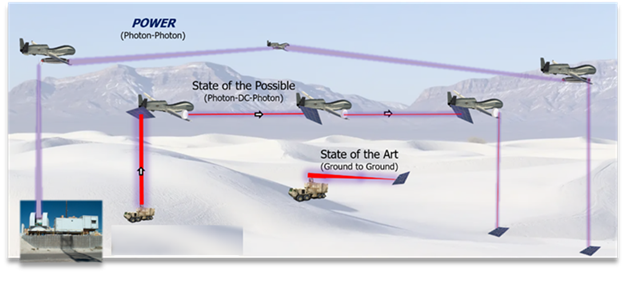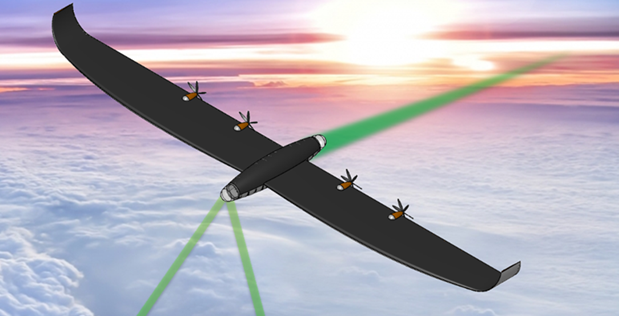Wireless energy for US military
DARPA, the research arm of the US military, is developing a way to deliver wireless energy to US troops worldwide.
Wireless energy, how is that possible?
We don’t think about it, but in fact sunlight and all other forms of electromagnetic radiation are intertwined electricity. A changing electric field generates a magnetic field, which in turn generates an electric field. This packet is a photon, a particle of light. Sunlight is wireless energy, and other electromagnetic radiation, such as radio waves, can also transmit wireless energy. This is what DARPA is doing now with project POWER, with large gliders flying above the clouds.
Laser beam with radio radiation
The idea is obvious. Orbit a series of planes around the earth, above the clouds, where the sun always shines. With the help of large solar panels or a station on the surface of the earth, you can charge the internal battery of the satellite and if the need arises, for example because freedom and democracy must be brought to an oil-rich country once again. Then you can use targeted laser beams to provide the shock troops with plenty of sustainable kilowatt hours of wireless energy right away from space.
Execution is more difficult. In addition to supplying and storing the energy, you have to precisely aim the laser beam at the collector of the marines.

Technical challenges wireless energy
The main technical challenge for wireless energy lies in the very high conversion losses. Laser beams also diverge (spread). Lasers are not very efficient, most of the supplied energy is not converted into laser pulses, but into heat. Working with relays exacerbates the problem even more. We actually only have one effective and energy-efficient form of electromagnetic radiation relay: mirrors. But these bring other problems, for example aiming. This is especially a problem at long distances.
A tough challenge for clever minds. But the benefits not only to US Marines, but to the rest of humanity (especially in remote parts of the world) are enormous. So it’s definitely worth cracking these tricky technical problems of wireless power.



